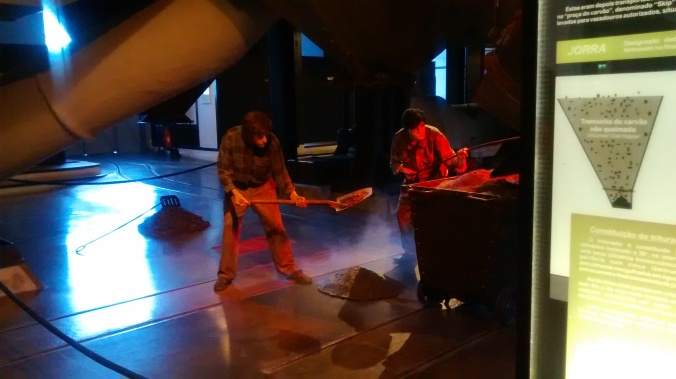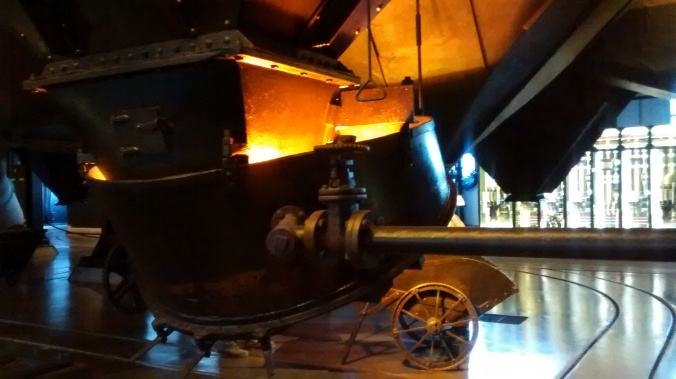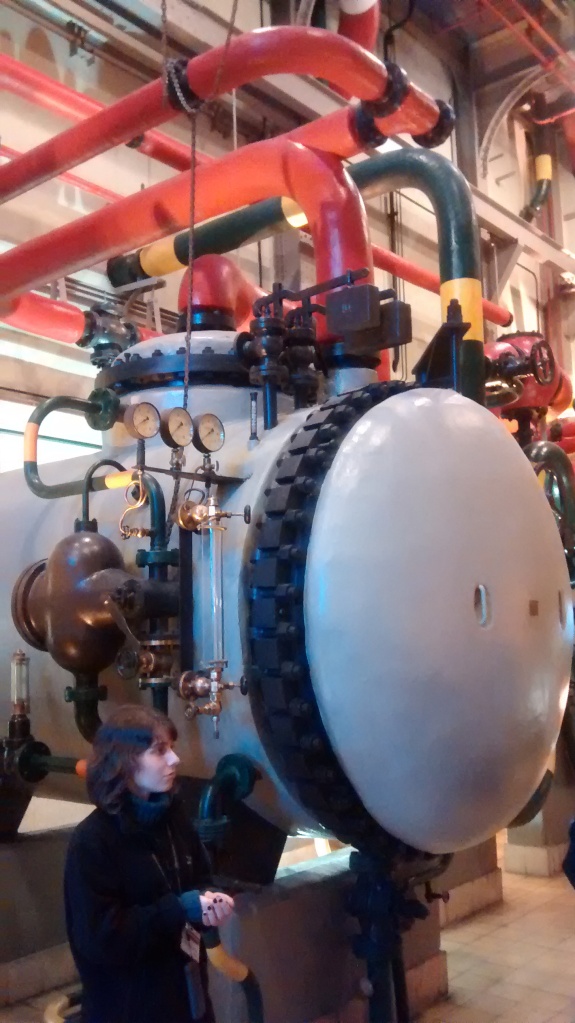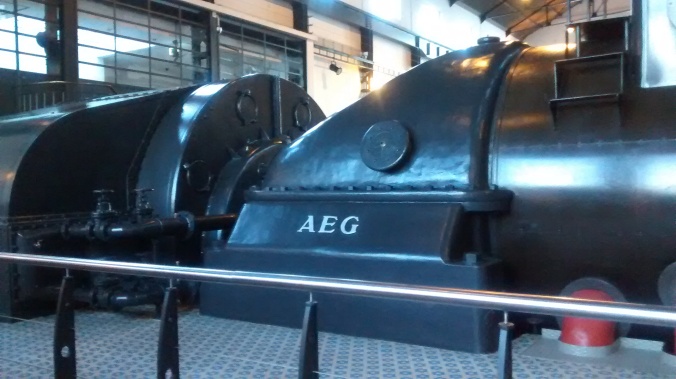I’d only had one experience of museum going in Lisbon before last week. It was largely a bit disappointing as, while featuring plenty of artistic pieces and relics which were very much within my areas of interest, the presentation was all a bit lacklustre. Fast forward to the middle of April and a new Meet up group I’d found in the city was offering a free guided tour of the Electricity museum and a shared dinner with all the guests. The electricity museum, occupying as it does the old power station building just a stone’s throw from Belém’s gorgeous tourist centre, I decided it was high time to give the museums of Lisbon a second chance.
Aside from the great location, the actual building is also something of a masterpiece. Constructed in the the early part of the 20th century by a British power station group, the red brick facades and curved ceilings over the generating halls make it something of a design classic and a rather lovely landmark of the neighbourhood.

After a bit of queueing outside and mingling with other people who didn’t know each other, our volunteer stepped forward to start the tour. Now this was my kind of museum. It started, as it would continue, with us getting up close and personal with the mechanics of this now-defunct power station. First, we were shown the courtyard, which you can see in the image above, where there would have been hundreds of tons of coal at any one time. Next to this were rails and trucks, used to transport the coal into a silo where it was smashed and ground into the smaller pieces needed to fire the furnace.
From here we walked inside and watched a short video which explained how the whole plant was operated, with diagrams and headline information – some of which was pretty unnerving, such as the fact that spent ash was deposited wholesale into the Tejo river! – and after this, we embarked on a tour around the facility, including a walk through the furnaces. The walk through furnace is lit with a vivid orange light, to give you an idea of the oppresive nature of the place when it was working. The additional information that it would have been 1300 degrees centigrade inside when operational was slightly maddening.
In a variety of positions, such as this one beneath the furnaces, were models of workers, showing the levels of discomfort they would have experienced, just 40 to 50 years ago, when the plant was in operation. While not possessing massive realism, it still gave us visitors a real appreciation of just how difficult it would have been to work here.
After this section, we looked at the water pumping system, where distilled water was driven into the plant’s system to drive the turbines as steam and river water from the Tejo was dredged and used as a contained coolant in a pipe system.
Finally, it was on to the turbine room itself, where the scale of the turbines is made really clear, as you can stand right next to them. One, with its housing removed, was started up. Then we were told that the operational speed of this goliath machine would have been over 5000rpm. A scary thought.
The museum’s operators – the energy company EDP – then allowed us to have a shared dinner and for the organising group: “Speak” – a really excellent, and truly international language and culture exchange operating throughout Portugal – to run games and fun workshops, which was a very nice gesture on their part.
Because of the program being busy, I didn’t have a chance to look at the seemingly very interesting renewable energy exhibit or some of the other interactive elements in the museum. So if you’re in Lisbon and – particularly if like me you’ve never been to a place like this – I’d really recommend the Museu da Electricidade. I imagine kids, in particular would love it. It’s interactive, informative and just being in amongst the huge scale machinery (as a big kid myself) was a huge thrill. Well worth a visit and I will certainly be going back.



